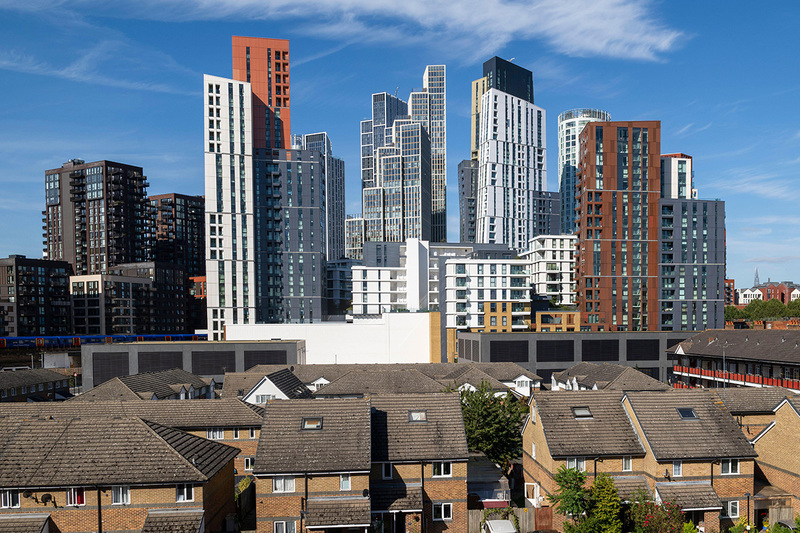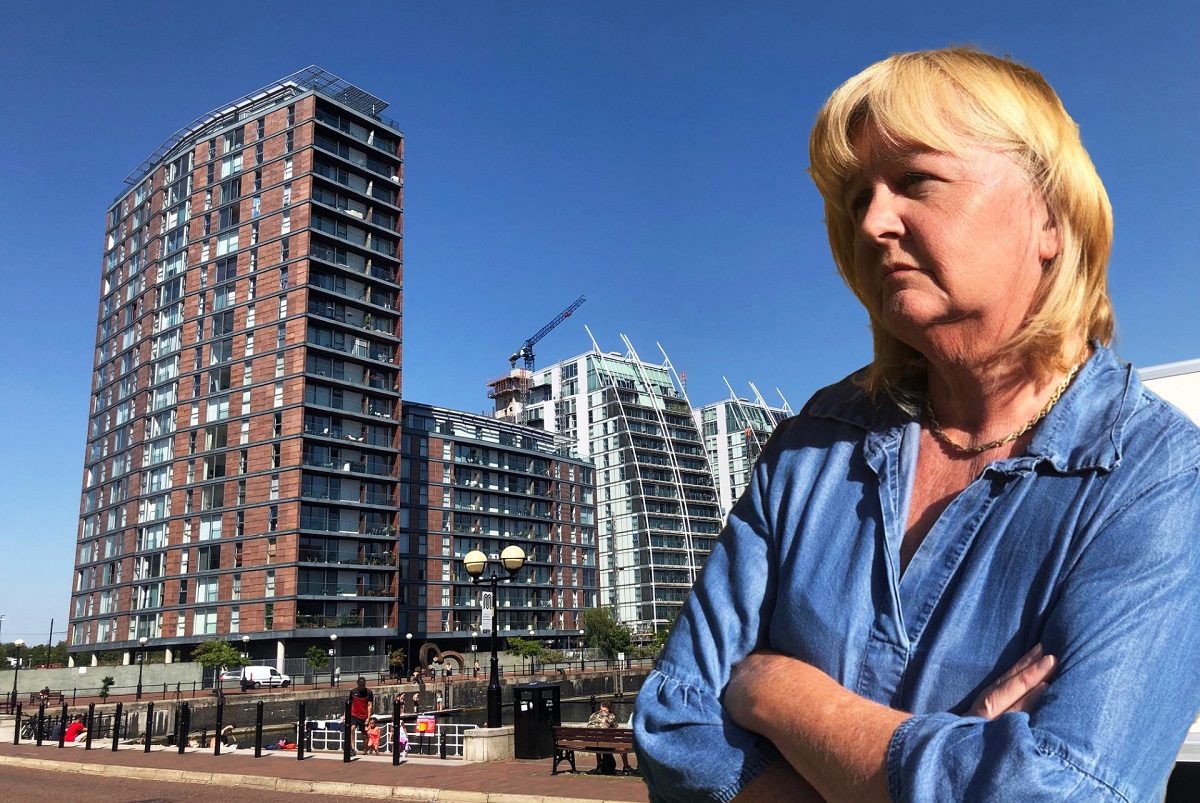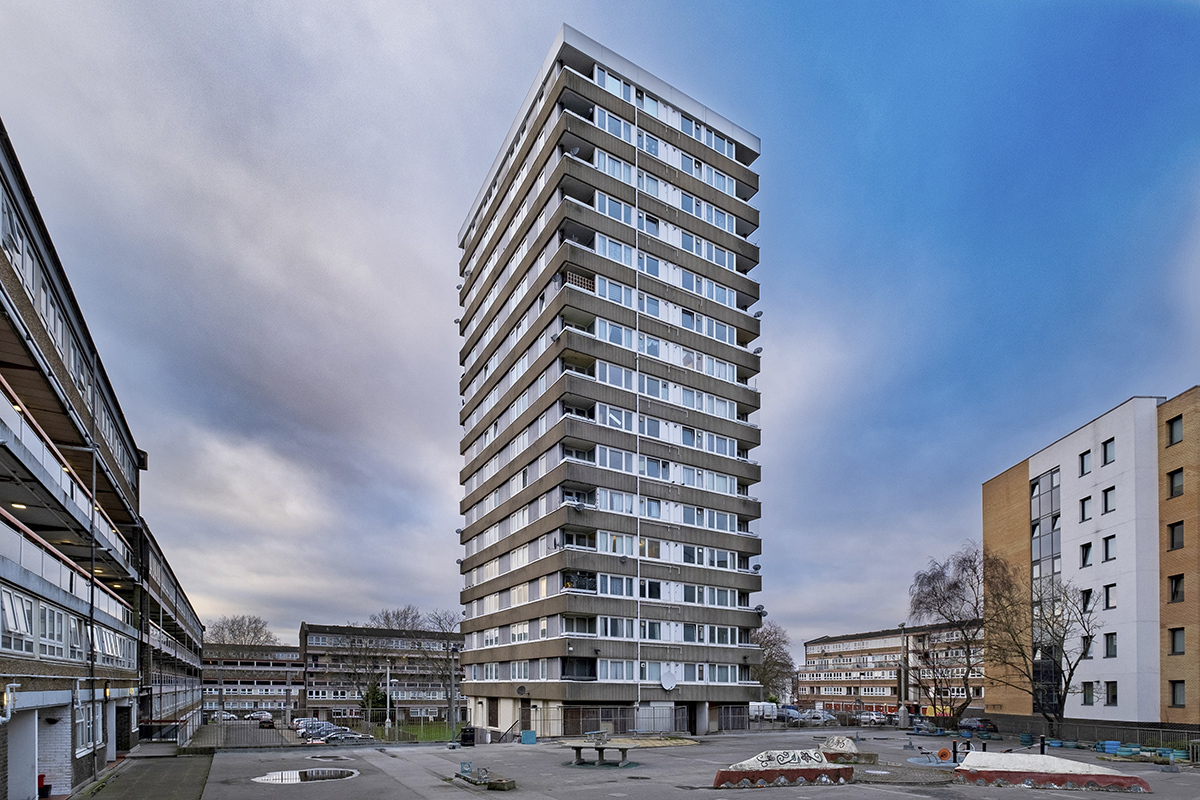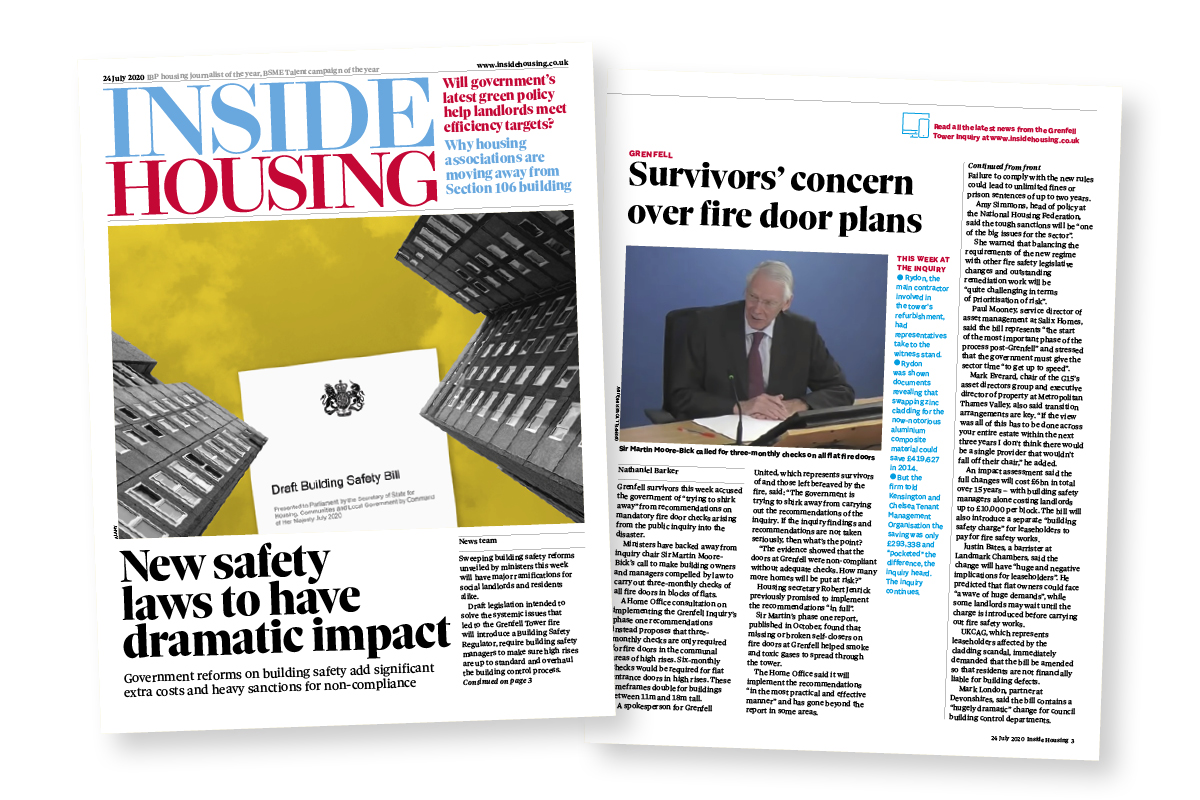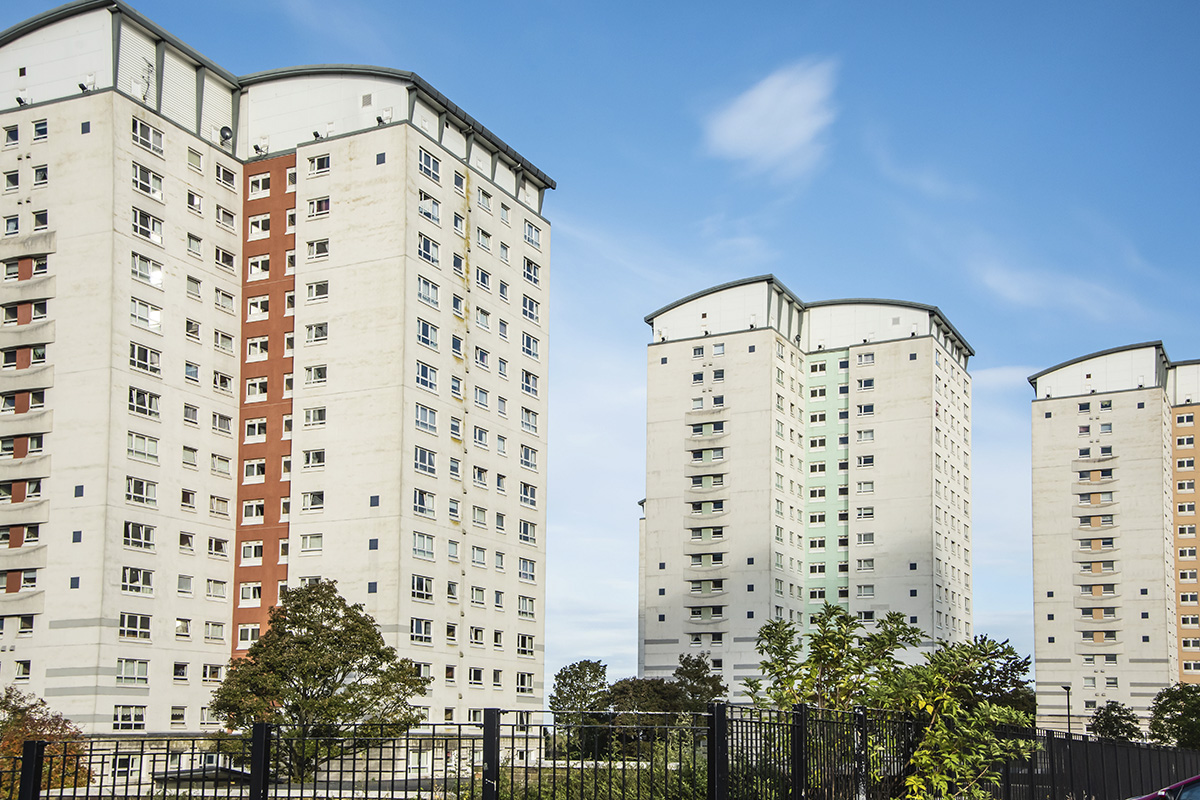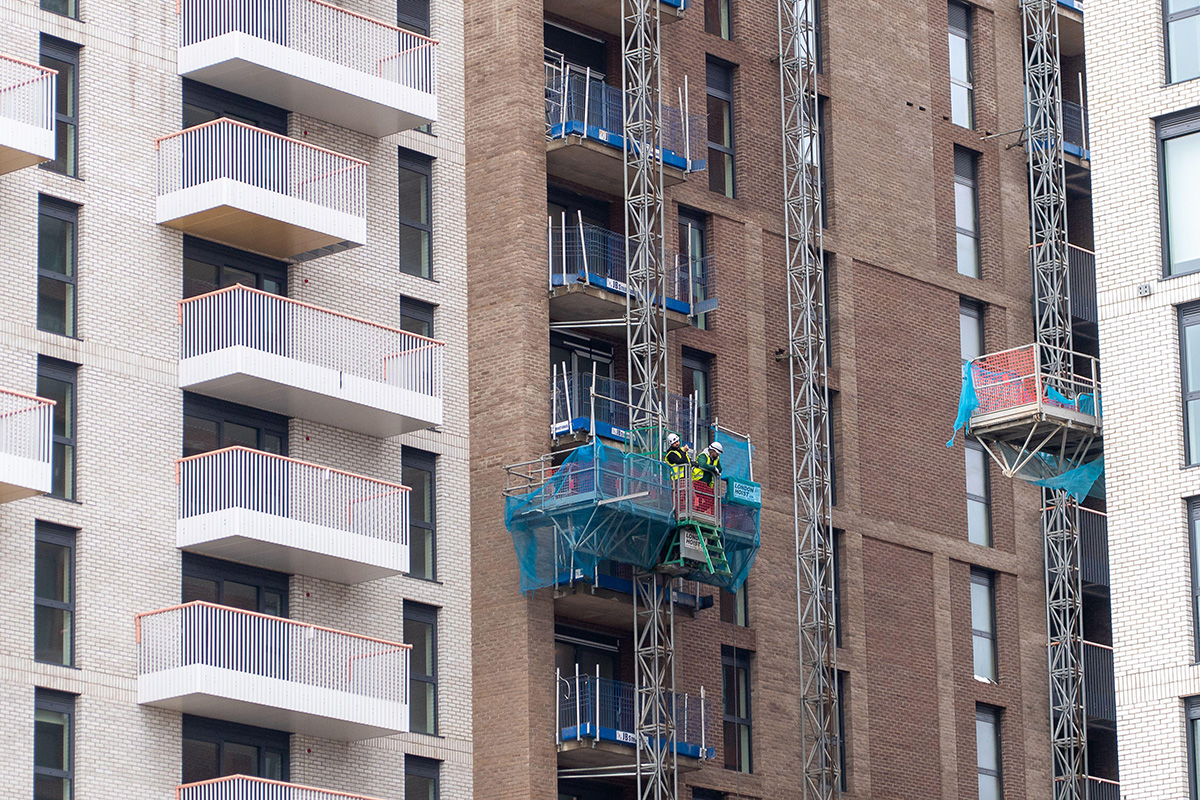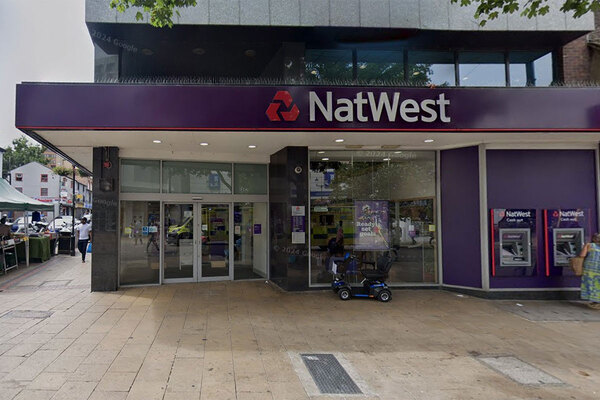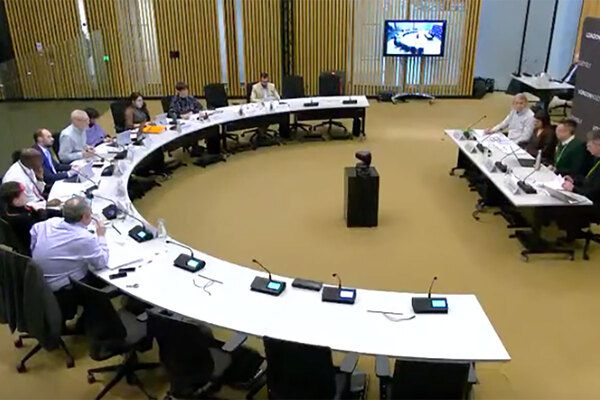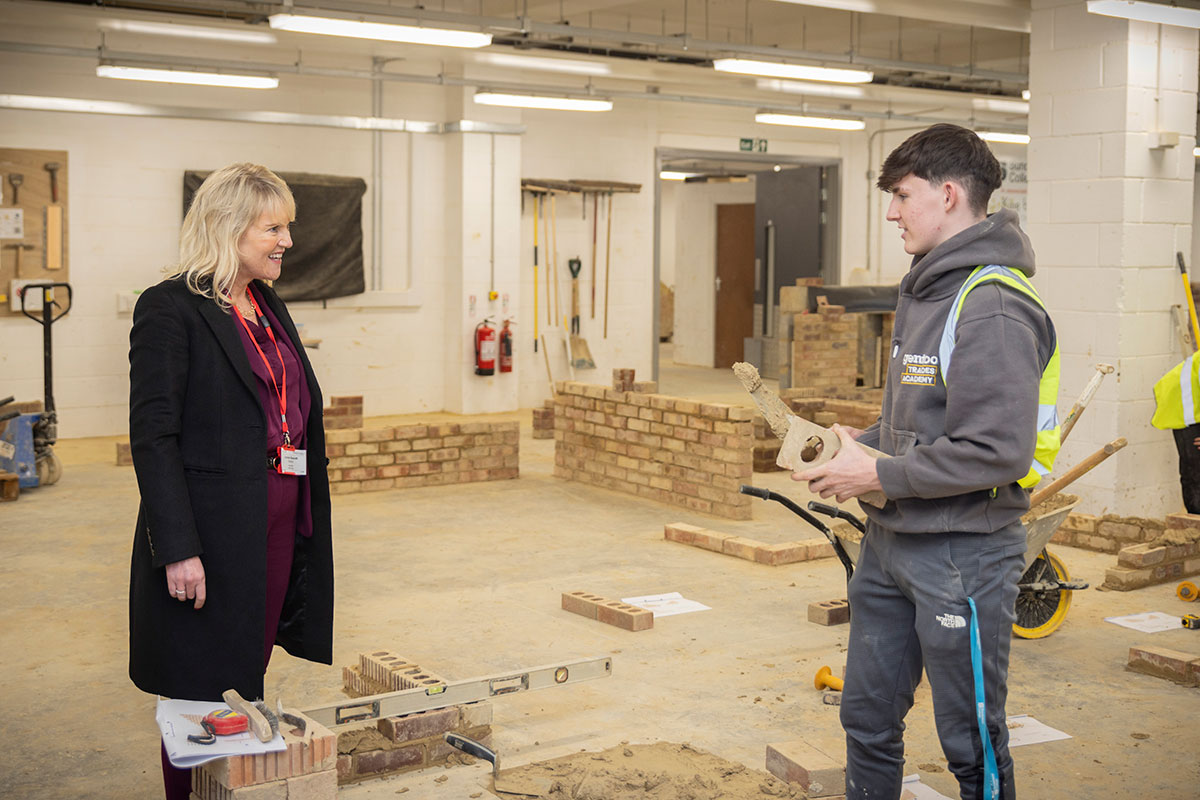A new era of building safety begins today. But will the major reforms actually work?
The new regulatory regime established through the government’s six-year effort to reform the system of building regulation after the Grenfell Tower tragedy comes into force today. But many in the industry fear the new system is under-resourced and rushed. Peter Apps reports
Welcome to a new era. Yesterday – if you are reading this on the day of publication – marked the beginning of a new regime in the world of building safety.
Frequently touted by the government as the biggest reform to building regulations since the 1980s, the regime which started life through Dame Judith Hackitt’s post-Grenfell review, and was given statutory force in the Building Safety Act 2022, came shuddering into life on 1 October.
It is hard to understate how complex these changes are – the act itself is 250 pages long, with 400 pages of explanatory notes. These will entail huge changes to the management, construction and maintenance of high-rise buildings, and the construction sector as a whole.
As the new regime takes effect, Inside Housing has been speaking to those on the frontline to understand the real-world difference the new regime will make.
What emerges is a picture of some positivity – a genuine belief in many quarters that it will raise standards and improve accountability.
But there are also widespread fears that the new regime is drastically undercooked, that the new regulator is not ready for the myriad responsibilities that will come its way and that the result, to begin with at least, could prove chaotic.
We will begin with the day-to-day management of existing buildings, the primary day job for social housing providers. Here, the regime bites only for buildings taller than 18 metres in height (measured from the ground to the floor of the top storey).
All of these buildings needed to be registered with the new Building Safety Regulator (BSR) as of yesterday, with key building information to be provided within 28 days of registration. Not to have registered by now is a criminal offence.
Housing providers now have six months (until 5 April) to get ready for the next phase. By that date, they are required to have a tenant engagement strategy up and running, and to prepare a building safety case, ready to be called in for inspection by the new regulator.
What does this involve? Gemma Darville, head of health and safety at Sunderland-based Gentoo, says her organisation is using a “claim, argument, evidence” approach.
“Our high-level claim is that our buildings are safe to occupy and then we split to sub-level claims to say they’re designed and constructed to be safe, but they’re also maintained so that they continue to be safe,” she says.
Gentoo has 25 high rises in Sunderland and has been piloting the building safety case on one tower, which will give it a “template” to work with when it moves on to the others. It is big task.
“We’ve had the external wall surveys and other surveys such as mechanical and electrical completed, to ensure we really know and understand our buildings holistically and the systems that make it up,” says Ms Darville.
Historic records
A major problem has been historic records of the buildings. “When we started we had very limited information on the construction of the building, including accurate floorplans. We’ve gone as far as searching out old photographs and reviewing [a historic database developed by academics] to understand how the buildings were constructed,” Ms Darville says.
Sue Sutton, chief executive of Salix Homes and chair of the Greater Manchester Housing Providers (GMHP) Building Safety Group, says: “The Building Safety Case is a lot of work: it’s everything from customer engagement, structural information, to signage to escape routes. It’s everything you could possibly think about, and more.
“The fact that it’s giving you the information about your asset can only be a positive thing, however there is a lot of work involved. Some organisations have hundreds of buildings to assess and may struggle to meet the April deadline. I also think there needs to be some kind of support for smaller organisations, it is very time consuming and resource intensive.”
“The fact that it’s giving you the information about your asset can only be a positive thing, however there is a lot of work involved. Some organisations have hundreds of buildings to assess and may struggle to meet the April deadline”
“One of the key things that people have been doing is information gathering,” says Charis Beverton, partner at law firm Winckworth Sherwood. “Because you need a fire risk assessment, you need somebody to assess the structural loading of your buildings, you need M&E [mechanical and electrical] surveys before you can evaluate.”
This creates a huge demand for experts, she explains, all of whom will need to be available as the build-up to the crunch April deadline mounts.
There will also be significant cost implications, because the surveys will almost certainly reveal issues which need to be fixed.
Finding the budget
Julian Chun, executive director of homes at RHP Group, says: “I think for us, the cost of doing the surveys and inspections and employing people has been manageable so far. We’ve managed to keep it within our existing budgets, although it has detracted from other things.
“But the biggest expense by far is just the physical delivery of work on site. So last year, we spent £2.5m on cladding remediation, compartmentation work in loft spaces, fire door replacements and just general actions coming out of fire risk assessments. And we really do not have many high-rise buildings compared to our peers.”
There are concerns that the new regime’s focus takes attention away from the risks in out-of-scope buildings, which may well be high risk while not being high rise.
“I actually think it’s going pretty well for high rise,” says Olivia Post, a fire risk assessor at the Adecco Group. “But lower down, the properties are just not on the radar, such as blocks where there is a mix of commercial and residential units, which are a nightmare to assess.”
For the high rises, safety cases are not limited to fire. Structural safety is a particular focus for Gentoo: the organisation has 10 ageing ‘large-panel systems’ buildings – built of slabs of concrete which have a higher collapse risk than traditional construction, as tragically exemplified by the Ronan Point disaster in 1968.
The organisation sent its pilot structural surveys to the Building Research Establishment for review to make sure they were thorough enough. It will now carry out intrusive surveys to the others, which will involve some residents temporarily moving out.
“Structural safety has not always had the focus of fire safety historically,” says Ms Darville. “We know the age of the buildings in the social housing sector and that they haven’t always been reviewed in the way we are now.”
Once the evaluations are completed in April, the BSR will begin calling them in and assessing them. This is a mammoth task: there are 12,500 high rises in the UK and the regulator will need to review all of them.
The BSR has said it will take a risk-based approach, starting with the most risky (likely to be defined by height and number of flats) and move out from there in five tranches.
“The sector needs to work together collaboratively as we all strive to embrace the changes. Though I think the bigger issue will be the capacity of the Building Safety Regulator, and the enormity of the task they will face to review and assess all these safety cases,” says Ms Sutton.
One source, with knowledge of its operation, says it has struggled to recruit – particularly to specialist roles like structural engineers. The wages in the private sector are far beyond anything the government agency has been resourced to offer.
“One of our concerns right at the outset was how on earth is the BSR going to resource all of this?” says Mark London, head of the construction team at Devonshires Solicitors, which has published a guide to the new regime here.
“The BSR doesn’t have an army of structural engineers and fire engineers. It seems to me that what they are going to fall back on are declarations that things have been done correctly. So, in other words, it will be, to a large extent, self-certifying.”
There are also concerns about how late information has been coming out from the regulator and government. Critical secondary legislation was only published in mid-August, guidance on tenancy engagement strategies was only released in mid-September and other key information has been slow to come forward.
“It’s very difficult to comply with something with such a lack of lead-in time and a lack of guidance. I know the regulator’s had a challenge around getting all of this ready, but why put a 1 October deadline if you’re not resourced up?” asks Ms Darville.
“The approach has not been particularly helpful,” says Mr London. “We were promised a lot of information at the beginning of the year, then in April, then in June, and it has now just all of a sudden landed in one massive gloop of information and legislation. What one would ordinarily expect to see with legislation of this type is a far more ordered progression of steps.”
A good example of this is the ‘golden thread’. For owners of existing buildings, the law requires them to “keep prescribed information in accordance with prescribed standards and keep that information up to date”, and pass it on to the next accountable person if ownership changes.
But what does ‘prescribed information’ and ‘prescribed standards’ actually mean?
It wasn’t until August that we learned the latter is defined as “electronic, formal, accurate, intelligible, accessible and secure”, with a clear record of any changes.
And the regulations which will define ‘prescribed information’ for existing buildings is still unpublished. As it stands, providers can make a good guess that it involves all the relevant information you would need in the construction phase (which has been set out in law), plus the sort of building information which needs to go into the safety case.
But at this late stage, with laws actually in force, there remains confusion about what the requirements are, an element of guess work and vast sums of money being spent on whizzy IT consultants who claim to have all the answers.
Existing buildings and new build
The air of concern expressed around existing buildings only amplifies when you speak to people in the industry about new build.
The changes here are enormous: the act introduces new duties on clients, designers and contractors that will apply to all building work – not just high rises.
But it is for high-rise construction where the changes are most significant. Active as of yesterday, new high rise projects are now subject to a new, much-discussed 'golden thread' approach. Like for existing buildings, this requires an electronic facility in which key building information is securely stored, easily accessed throughout the process, passed between duty holders throughout and to the ‘principal accountable person’ at the end of the project.
Second, as of yesterday, the full ‘gateway’ process introduced by the act applies.
This process effectively introduces ‘hold points’ – where the project cannot proceed to the next stage until it is approved. The first is the planning process, where the new regulator becomes a statutory consultee. This was already in force.
The second is building control sign-off, which will see the BSR becoming the building control authority for these buildings, required to sign off the full plans before work can begin on site.
This is a big change: currently projects can progress while they wait for building control approval. And the regulator has said the information it will require will be “significantly more comprehensive and will be requested at a much earlier stage” than under the current system.
Finally, the third gateway kicks in at the end of the process, the building must be signed off by the BSR before it can be occupied.
This is a vast administrative burden for the fledgling regulator to take on. Not only must it sign off individual projects, it must also approve any major changes.
Kris Zakrzewski, a project manager at Envoy Projects who works on high-rise projects and has also researched this issue as an academic, says: “I think the BSR is under-resourced massively and they aren't able to do the job.”
For its part, the regulator says it is “recruiting a significant number of roles to make sure we have the right skills, experience and behaviours to deliver a modern and effective regulator”. It adds that it can “also draw on skills and expertise of our partner regulators, such as the Fire and Rescue Services and building control specialists” if required (full statement below).
There are also concerns about the lack of information from the regulator, even as the scheme goes live.
Vicky Saunders, managing director at BTP Architects, says: “My clients are looking to me to guide them through it. It’s two weeks away from going live [at the time she spoke to Inside Housing] and I don’t know how to submit my building regulations application to the new regulator,” she says. “Will applications to the BSR go through the planning portal? I assume they will, but I don’t know for sure.”
Her big concern is ‘change control’ – the process by which the regulator will approve or reject major changes to the design as it progresses. Even smaller changes need to be notified to the regulator as they develop.
“It just lacks an overlay with how we actually construct,” she says. “Any job is a movable feast and the fear is that we’re going to end up with delays and costs and overrun contractually.”
But this is just for high-rise buildings – where the changes have been widely discussed and anticipated for some time.
“I think the BSR is under-resourced massively and they aren't able to do the job”
For Chris Vaughan, managing director of Approved Inspectors and chair of industry body the Association of Building Control Approvers (ABCA), a much bigger concern is ‘out-of-scope’ buildings.
“There’s a lot of information out there about high-rise buildings, and the gateway process,” he says. “But what hasn’t been taken care of very well is all the other types of buildings. And that’s causing a lot of concern and a lot of problems for our members.
“We had a meeting with our members last week and even the smallest details, such as who is the person carrying out the work, has not been defined yet,” he explains.
But this sort of issue is fundamental – without it, a building control application cannot be made.
“These are very subtle, important things because we are serving a legal notice here and the notice has to be correct,” he says.
Clarity asked for
Craig Ibbotson, operations director of Meridian Consult Ltd, an approved inspector, agrees. “I think there’s still a general perception in the industry that the act just applies to high rise and complex buildings. And there’s very, very little coming out of the Health and Safety Executive or the BSR as to the other aspects of it, which are going to affect absolutely everything that you need building control approval for,” he says.
One surveyor, who asked not to be named, adds that information has been hard to glean from the new regulator. “We have asked for clarity and interpretation, but DLUHC [the Department for Levelling Up, Housing and Communities] will say it’s the BSR who should clarify and the BSR will say it’s DLUHC. I think it’s crazy to issue legislation without actually having that clarity behind it.”
It is not just definitions. The new law also contains a new requirement for everyone working in the construction industry to be competent and to be able to prove their competency.
“I think in the high-rise building market, people are aware of what they need to do and there’s an appetite to make this work. But when we filter it down to the everyday project, the white van man, whose living it is to build loft conversions or build extensions for people, they are completely and utterly unaware of what’s coming,” adds Mr Vaughan.
The changes to competency requirements also impact building control inspectors directly – both those working for local authorities and privately.
By April, everyone working as a building control officer will be required to demonstrate their competency to the new regulator. This will be done through either exams or portfolio assessments.
But this is an enormous task.
“Trying to squash in the volume of competency assessments that need to take place in order for all of those in the space to become registered building inspectors by the beginning of April next year is a huge task. I can see a lot of people leaving the industry,” says the anonymous surveyor.
“One of the difficulties we’ve got across the whole building control industry is that it’s an ageing population. And I think there are estimates that up to 38% of building control professionals may not wish to attain registration, which puts quite a lot of pressure on existing resources,” adds Mr Ibbotson.
The sense of major changes being rushed through, with consequences that are not fully thought out, feels overwhelming.
“The white van man, whose living it is to build loft conversions or build extensions for people, they are completely and utterly unaware of what’s coming”
“I just compare it to CDM [construction, design and management regulations] when that was introduced in the 1990s – that was a massive change in the health and safety arena,” says Mr Ibbotson. “But there was so much more guidance. And the big problem now is that we’re just not getting any information whatsoever. I mean, this is the biggest change in building regulations since the mid 1980s. What we’d like to see is a bit more of a common sense approach in terms of transition.”
Will all of these changes – and we have only dealt with some of them in this piece – at least result in a safer industry?
Mr London says it will have an enormous impact on the way clients – often a housing association in the social housing sector – operate. “The days of clients being able to say, ‘Well the design-and-build contractor is building it, we can sit back, pay the money and then in two years’ time, we’ll end up with a development,’ is over. That’s no longer going to be acceptable,” he says.
But this change will come at a cost. “With far more checking, far more record keeping and much more expensive contract administration, the building is going to cost a hell of a lot more to procure, because all of these costs will have to be built into the financial model,” he says.
He predicts the result may be far less social housing in buildings above 18 metres, and fewer tall buildings full stop.
But others are less convinced that the changes will result in such fundamental change.
Dr Selçuk Çıdık, an associate professor in construction management at University College London, says the core idea of the ‘golden thread’ is not that different from long-standing regulations on how to handle building safety information.
According to their research, in practice, it is not uncommon that such regulations have only been paid ‘lip service’ because of different interests and priorities of the stakeholders involved in building lifecycle.
“If the exchange of information is just being done to satisfy certain legal requirements, rather than as the means to collaboratively think about safety and making residents feel safe, then having a golden thread won’t make much difference,” he says.
He highlights the culture of the industry as the main factor that determines whether regulations are practiced as intended, and points to several issues which need to be addressed to shift the culture for a more fundamental change.
On top of his list is procurement: the way construction notoriously engages in ‘race to the bottom’ pricing, which then drives focus towards cost and away from appropriate consideration of quality and safety.
“This has been around for a very long time in the construction industry, that the procurement and contractual practices encourage fragmentation and speed, rather than collaboration and reflection,” he says.
Mr Zakrzewski agrees. “Usually the lowest price is still winning the tender,” he says. “When we present it to the client, they are usually not interested in the risk, they’re just interested in the numbers. I can’t really see this changing. The money is still the main driver. So the contractor is going to drive to the cheapest price and then we’re going to have another problem.”
Others are more positive – but still see danger in the short term.
“I really think it’s over a longer period of time that we will see the benefits of it,” adds the anonymous surveyor. “But I do think the legislation has been rushed. I don’t think it’s been properly thought out and I don’t see how it’s going to be resourced in the short term.”
These are major concerns. We will see how they pan out in the real world as of today.
Response from the Building Safety Regulator
Chris Griffin-McTiernan, deputy chief inspector at the BSR, said: “In recent months, colleagues from across the BSR programme have been out and about, speaking with more than 8,000 stakeholders about the new duties under the Building Safety Act, so we’ve heard these concerns first hand and understand them. BSR staff also regularly meet cross-industry organisations and attend industry and regulator forums on building safety.
“As we have openly said at the many events, meetings and webinars, the programme is on track and will be delivered on time. We closely monitor any concerns, and we will take action to address them if needed.
“The BSR has been building its structures and operational readiness since it was announced that the new regulator would be housed within the Health and Safety Executive. We have the resources, methodology and regulatory regime right now to allow us to deliver the policy intent and regulatory activity set out in the act.
“As we introduce the most significant changes to regulation of building safety for a generation, we recognise there are many dependencies – legislation, then policy, then operational delivery.
“1 October is a key milestone in the BSR journey – those responsible for high-rise residential buildings will have registered them with us, ready for us to begin the building safety certification process.
“It will also mark the beginning of BSR becoming the building control authority for higher-risk buildings in England. We are ready for this and expect those working within the built environment to take time to understand how the changes will affect them.
“We are recruiting a significant number of roles to make sure we have the right skills, experience and behaviours to deliver a modern and effective regulator. We also draw on skills and expertise of our partner regulators, such as the Fire and Rescue Services and building control specialists to ensure good regulatory decisions are made at the right times.
“The industry now needs to step up and make sure it is equipped and prepared for the changes ahead.”
Sign up for our asset management newsletter
Already have an account? Click here to manage your newsletters
